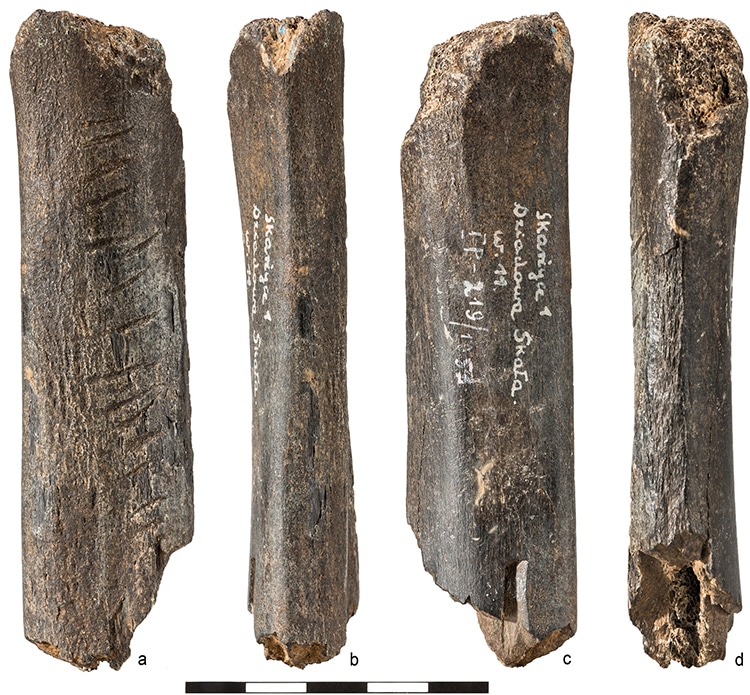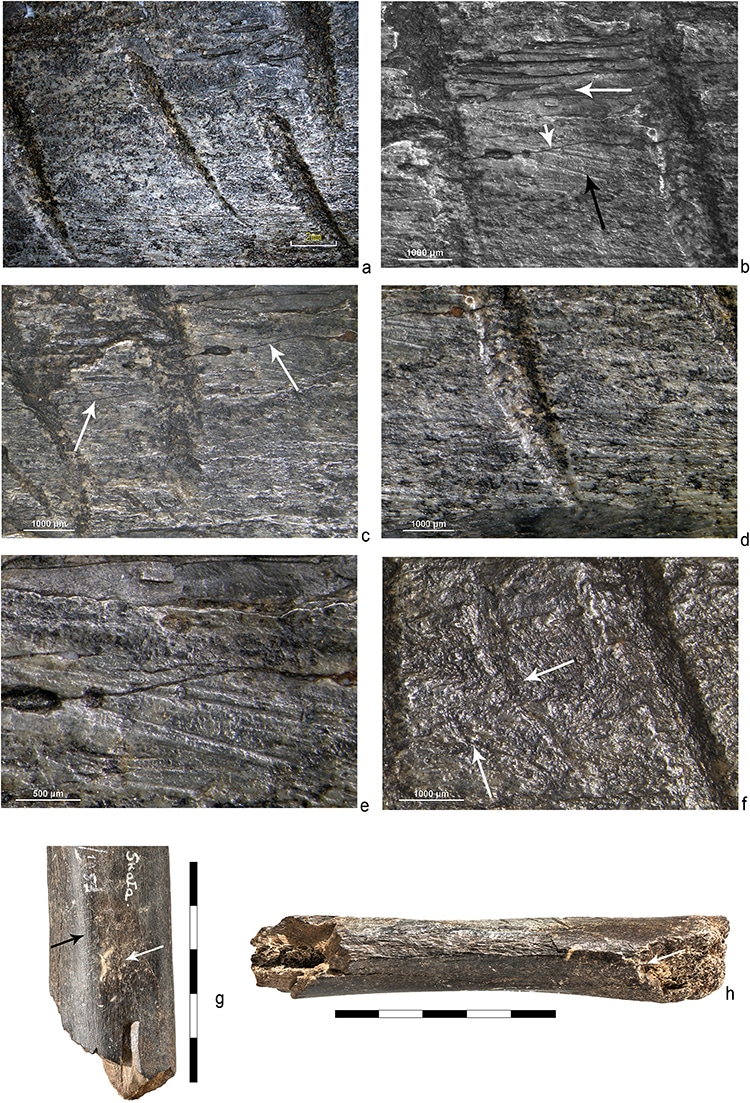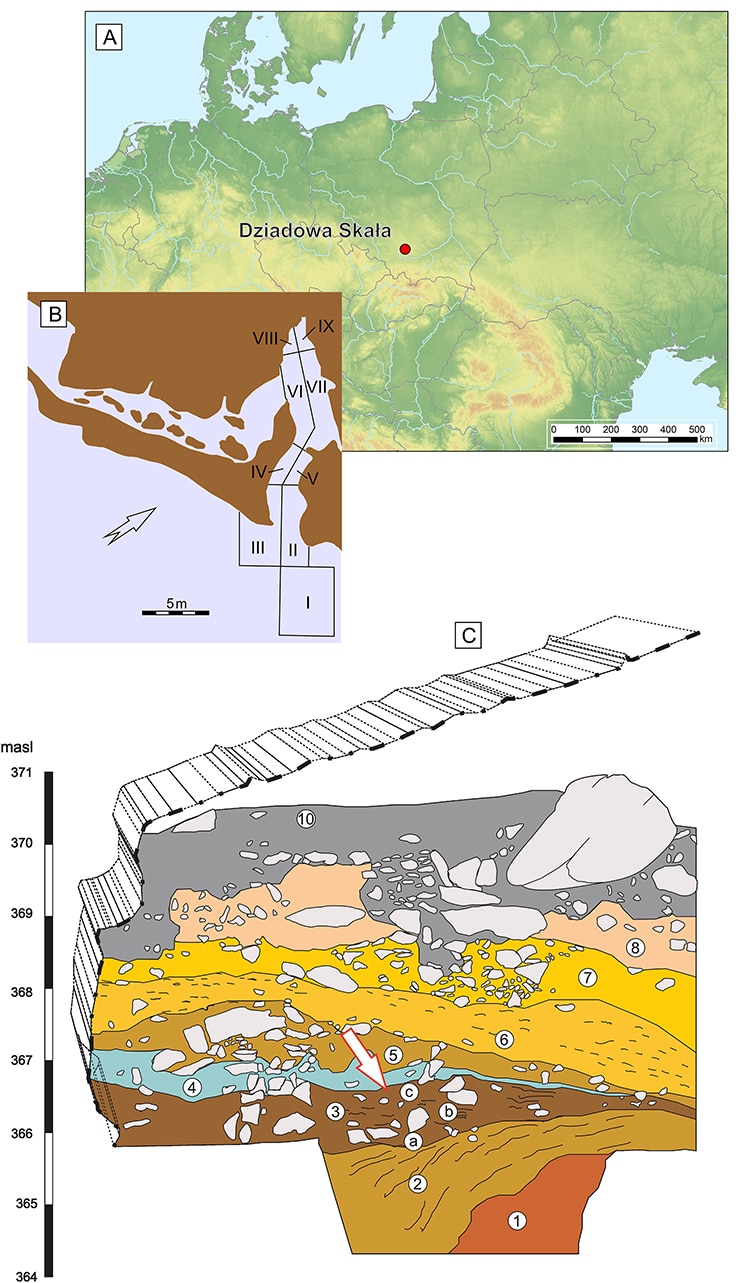
The inscribed 130,000-year-old bear bone. (Photo: Fig. 2 via T. Gąsior, in Płonka et al.)
Neanderthals, our ancient human cousins, left behind many remnants of their now-extinct existence. Some left footprints now fossilized in Spain from steps they took 100,000 years ago. Others left handprints and cave art on the walls of earthen hideouts. But a fragment of bone discovered in the 1950s in a Polish cave may indicate these ancient humans created art 130,000 years ago. The bone—from a bear—has been carved with deliberate, patterned lines, suggesting it was a creative endeavor. This was recently announced by researchers in the Journal of Archeological Science.
The bone was discovered in Dziadowa Skała Cave in the region of Częstochowa Upland, Poland. Based on the deposits in which it was found, the bone dates back to between 115,000 and 130,000 years ago. Once thought to be a rib, it is actually a radial bone from a bear. A team from the University of Wrocław in Poland has recently re-examined the artifact, discovering this misclassification. Through microscopy and X-ray computed tomography, they zoomed in on the markings incised into the bone. The 17 slashes in the bone are grouped in parallel and purposeful arrangements.
The team also tried using flint knives and other prehistoric tools to carve similar markings onto modern cow bones. They discovered that the way the end of each mark curves slightly indicates a single right-handed ancient carver. “The incisions are evidently an effect of a deliberate action, not a side-effect of some practical activity. The bear radius from Dziadowa Skała is thus yet another piece of evidence for the emergence of symbolic culture, evolved by hominins in Africa and Eurasia, and represents the oldest example of marked bone north of the Carpathian Mountains,” the authors concluded.
Archeologist Paul Pettitt, who did not participate in the research, commented on the significance of the find to Live Science. “That such series of parallel incisions really appear with the Neanderthals and not before, suggests that they were a cultural practice that had meaning and function, and not, say, the product of unconscious personal habits like modern doodling,” the Durham University professor said. He further stated, “It is remarkably difficult—and controversial—to try to ascertain the specific information recorded by such ‘symbolic’ marks…the Dziadowa Skala Cave incised bone at the very least shows us that Neanderthals were using visual culture to encode information, a truly human capability.” This new analysis of an ancient artifact tells us more about our human family and the very, very long history of art.
This 130,000-year-old bear bone with incisions may be the earliest example of Neanderthal art.

Detailed views of the carvings on the bone. (Photo: T. Płonka (a-d, f), M. Diakowski (e), T. Gąsior (g, h); computer processing by N. Lenkow, in Płonka et al.)

The Dziadowa Skała Cave and drawings of deposits within. (Photo: Fig. 1 via A. Wiśniewski, citing to Chmielewski (1958), in Płonka et al.)
h/t: [Smithsonian Magazine]
Related Articles:
Archeologists Unearth a Rare Purple Pigment That Is More Valuable Than Gold
Stunning Facial Reconstruction of a Mummy Found in an Australian High School
1,300-Year-Old Heartfelt Letter Between Family Members Found in Iranian Cave
Ancient Rock Art Depicts Psychedelic Music and Dance in Peru
